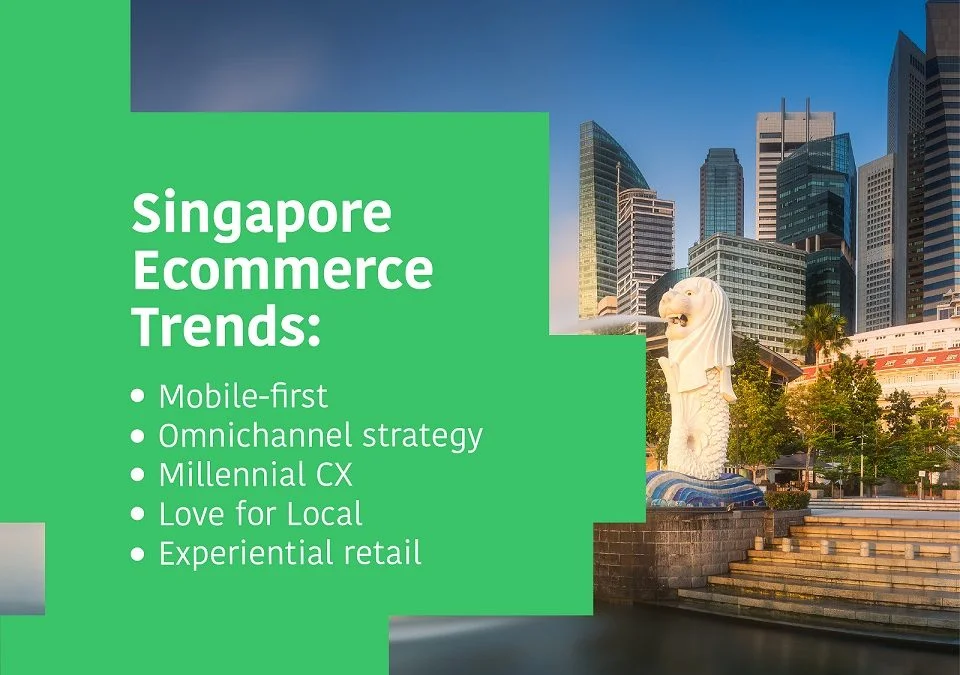- Design industry shaping loyalty programs
- Integrate easily and go live quicker
- Deliver hyper-personalized consumer experiences
Capillary acquires US-based Brierley+Partners Read more >
Capillary named a Leader in The Forrester Wave™: Loyalty Technology Solutions, Q1 2023 Report Read more >

Over the past two decades, Singapore has become the hub for everything – entrepreneurial, financial, retail, fashion, cultural… you name it and they have slayed it! In this blog, we will highlight how some of the latest ecommerce trends in the country has led to the dawn of a digitized hub.
Singapore was not new to ecommerce. Even before the pandemic era, there was a major disruption in the retail market with booming ecommerce and closure of traditional shops in 2017. In fact, a survey by Visa in 2014 showed that Singaporeans are the top online shoppers in South East Asia. While 26% of them were shopping online once a week, almost 50% of the shoppers said that they were likely to do all their purchases online.
This was primarily due to the level of internet penetration in Singapore. The digital infrastructure in the country enabled to achieve up to 88%, with a big chunk of the population comfortable with digital payment modes. It was also observed that high preference for online shopping was due to convenience, cheaper prices and direct delivery. While globally ecommerce retail jumped, online sales doubled in Singapore, demonstrating that consumers slid into the retail shift with ease. This also showed evidence that retailers that had an online presence before survived the economic crisis caused by Covid.
And therefore the trend was already set. Ecommerce in Singapore was flourishing, and marketers now have to match the pace of Ecommerce growth by learning the dynamic trends of the landscape. Let’s take a look at what’s trending in online shopping from this boom that retailers can draw cue from:
The younger population of the country emphasize on the higher smartphone penetration. Therefore ecommerce players should lean towards giving mobile-first experiences to achieve a wider online reach. For instance, creating a mobile-friendly webpage can result in better search engine and organic traffic.
Shopee, one of the leading ecommerce platforms started in Singapore in 2015. They later spread in other parts of South East Asia. The platform sells products across different categories. One of the notable features of the platforms is its seasonal and non-seasonal offers, as well as livestreaming with popular social media influencers to gain attention from the youth of the country. Shopee grabbed the mobile-first trend and focused on optimizing user experience on the mobile app, reaching out directly to the younger users in Singapore.
A 2020 study by market research consultancy Blackbox and survey firm Toluna said that almost 40% of consumers were not satisfied with their shopping experience. This shows that ecommerce platforms have a lot of scope for improvement which needs to be done by prioritizing the consumer’s needs. Introducing a chatbot to understand the customer’s concerns, also point out that shoppers would prefer an interactive medium to answer their queries. Retailers can consider using Whatsapp as a medium to get closer to the customer and understand their shopping behavior better.
Carousell, one of the world’s largest secondhand marketplace where customers can buy or sell electronics, apparels, used cars, cleaning and repairing services. To achieve empathetic and well-informed customer support, the company has implemented AI automation and data to anticipate customer needs. Carousell’s chatbot is able to find relevant solutions to consumers’ queries rapidly and accurately.
Even pre pandemic Singapore witnessed many traditional brick-and-mortar stores being closed. Covid had accelerated these closures. Omnichannel retail can thus play a role to bring these stores back to life. Stores can act as a pick-up point for ‘click and collect’ models where customers can buy the goods online and collect them at a convenient location of their choice.
RedMart, an online supermarket arm of the Lazada group is one of the top grocery shopping platforms in Singapore. RedMart has introduced many innovative strategies to ensure a seamless experience for consumer. For example, the platform records and automatically saves delivery preferences and commonly purchased items, leading to convenient shopping for the customer and higher conversion rates for the retailer.
Post Covid, consumers’ interest in local brands is rising. This is a peculiar trend given that several international brands are found in the country. A news report by Strait Times explains that this is because Singaporeans want to support the regional brands to revive them from the Covid aftermath. This trend shows that a huge opportunity lies in partnering with such brands and attracting consumers for the right reasons.
Zalora, a fashion e-retailer that is taking over the street fashion space with its top international and local brands. Not only does Zalora partnered with several local brands through its marketplace where independent merchants can sell their products, the brand is also known for its blogs that contain guides and tips on fashion, beauty and lifestyle.
While consumers are engrossed in the online shopping world, retailers have come up with compelling reasons to bring customers back to stores through experiential retail. Experiential retail basically focusses on creating an immersive experiences for customers, prioritizing engagement over sales. Upcoming AI and tech solutions like augmented reality, interactive digital mirrors, do-it-yourself sections which allows customers to personalize their desired product would go a long way in building customer experience and eventually a long lasting brand relationship.
Bath & Body Works is an American bath shop brand that operates as part of the Valiram Group in Singapore. Last year, when self-care was gaining importance during the pandemic, Bath & Body Works swooped into the online space in 2020. Using the capabilities of Capillary’s Anywhere Commerce+ tool, the brand aced their ecommerce platform scalability and stability, managing a large jump in sales on the go live day of their website. Besides scalability, the brand also prioritized seamless consumer journey experience and enabled smart search merchandising on the website to resonate with their digital customers.
Thanks to the nudge from the pandemic, Singapore hopes to become a global ecommerce hub. In an interview with CNBC, Ben King (country director at Google Singapore) pointed out at the number of initiatives taken by the Singapore government to cultivate a conducive landscape for ecommerce and digital growth. While early in 2020 Enterprise Singapore announced an Ecommerce Booster Package, the government has now partnered with Google under the Skills Ignition SG initiative to train citizens who are looking for jobs in the digital industry. As Singapore is on the path to build a smart society, the country is gradually moving towards a progressive and increasingly digital economy.
Another bizarre possibility we might see in Singaporean ecommerce, is new found importance of the physical stores. For example, Singapore’s popular fashion e-retailer Love, Bonito has opened its third showroom in Singapore. In a Channel News Asia article, NUS Business School’s Associate Professor Tan Soo Jiuan says, “Brands are opening brick-and-mortar stores in the hopes that diversifying sales can bridge and enhance the consumer’s journey. But this approach will only work if the brand has already built up an online reputation and can drive traffic to their physical stores.”
With ample space for innovation in both online and offline channels, there are many ways in which players can differentiate with customer experience and business strategies. Marketers must not forget that this differentiation is the key to shine in the vast digital landscape of Singapore.

August 13, 2021 | 4 Min Read
Over the past two decades, Singapore has become the hub for

June 24, 2020 | 4 Min Read
Singapore has been hailed in the global community for the qu